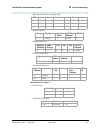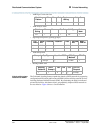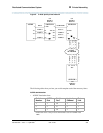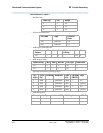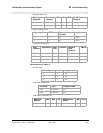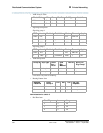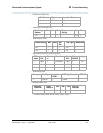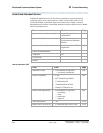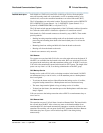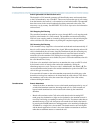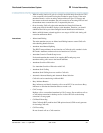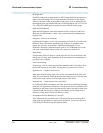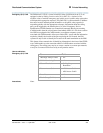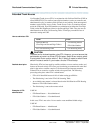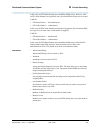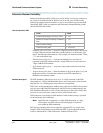
Distributed Communications System
339
Administration for Network Connectivity
555-233-504 — Issue 1 — April 2000 CID: 77730
B Private Networking
Detailed description Each branch in a CAS has its own LDN or other type of access from the public
network. Incoming trunk calls to the branch, as well as attendant-seeking voice
terminal calls, route to the centralized attendants over release link trunks (RLT).
The CAS attendants are at the main location. The main location can be a DEFINITY
ECS, a DEFINITY System Generic 1 or 3, a DEFINITY System Generic 2.1, a
System 85, a DIMENSION PBX, or a System 75 (V3).
The CAS main switch operates independently of the CAS branch switches. Operation
for CAS main-switch traffic is identical to operation of a stand-alone switch.
Each branch in a CAS network connects to the main by way of RLTs. These trunks
provide paths for:
• Sending incoming attendant-seeking trunk calls at the branch to the main for
processing and extending them back to the branch (both parts of a call use the
same trunk)
• Returning timed-out waiting and held calls from the branch to the main
• Routing calls from the branch to the main
A branch can connect to only one main.
CAS Queues
Two queues are associated with CAS calls: one at the main and one at the branch. If
idle RLTs are available from the branch to the main, RLTs are seized and CAS calls
are queued at the main along with other attendant-seeking calls. If all RLTs are in use,
CAS calls to the attendant are queued at the branch in a RLT queue. The length of the
queue can vary from 1 to 100, as set during administration of the RLT group.
CAS Backup Service
Backup service sends all CAS calls to a backup extension in the branch if all RLTs
are maintenance-busy or out of service, or if the attendant presses a backup button
that is not lighted.
• To activate the feature and provide notification that backup service is in effect,
assign the backup extension to a Backup button and associated status lamp.
• The status lamp remains lighted as long as backup service is in effect.
• To deactivate the feature, the attendant presses the Backup button while the status
lamp is lighted.
Calls are not sent to the backup extension unless all RLTs are maintenance-busy or
out of service.
CAS Remote Hold
The attendant can put a CAS call from a branch on Remote Hold. The branch holds
the call and drops the RLT. After a time-out (same as the timed reminder for an
attendant-held call), the branch automatically attempts to route the call back to the
attendant. The returning call can queue for the RLT. Attendants should use Remote
Hold when they have to put a call on hold to keep RLTs from being tied up
unnecessarily.



